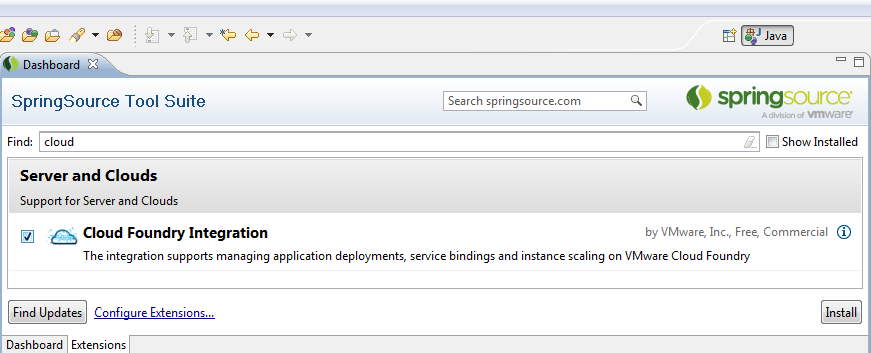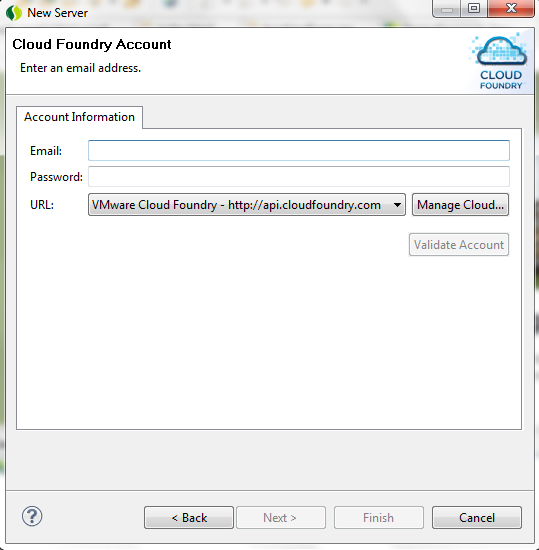Cloud computing is becoming popular and a lot of companies already started deploying their applications on cloud or have plans on doing so in near future. Having your services on cloud allows for greater scalability, improved performance and ease of development. In this article we will introduce some of the basic concepts.
You can have your own private cloud or can use a public one by many of the vendors such as Amazon, Eucalyptus etc. The one we use in this article is from VMware called Cloudfoundry and is a beta product so is free to try on. This cloud supports Java, Grails and .NET based frameworks. For more reference look at blog.cloudfoundry.com
We will start with creating an account and deploying a sample java based application on it.
- Signup yourself at cloud foundry signup (EDIT: This process is much faster in 2013 as earlier it used to take 2-3 weeks)
- Download Spring based IDE (STS) or Eclipse for development and connecting to Cloud.
- Integrate STS with Cloud Foundry Extension by opening up STS–>Help–>Dashboard and then going to Extensions tab. Search for Cloud Foundry and install it

- Add a New Server in STS and select VMware–> Cloud Foundry

- Now supply your login credentials here which you received from step 1 and validate account.

- Almost done! This is how your server will look like. Now just add any web project to it and enjoy the benefits of cloud.

Here is a sample web project that you can push to the cloud https://github.com/spinachsoftware/HelloCloudWebApp.
Here is the URL to check for an already deployed web app http://hellocloudwebapp.cloudfoundry.com
Stay with us to see more advance versions for web apps deployed on cloud which will use resources such as messaging, database and so on. More is coming….


Oubli dans mon preimer commentaire : ce que l’offre Free ne te permet pas de voir sur RUN@Cloud, c’est la replication, haute dispo, etc. Pour ca il faut regarder les options des offres payantes et c’est la que les PaaS vont se differencier plus significativement.